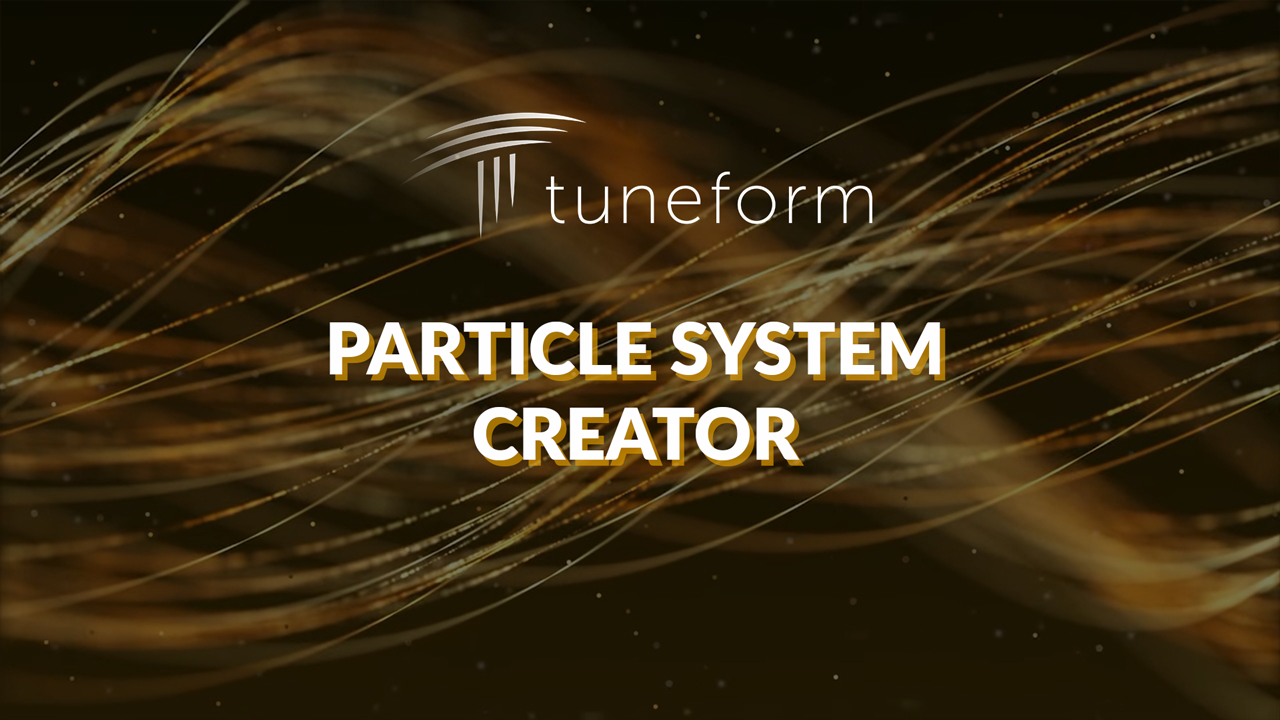Introducing The Tuneform Particle System Generator

We are excited to announce the release of our newest feature, The Tuneform Particle System Video Creator. This application lets you create highly customizable, seamlessly looping particle system videos with transparent backgrounds.
These videos can be used in your own video projects, for a wide range of different use cases. Head over to the main page to learn more and try it out for free.
This feature is built out from a visual effect that's an extremely popular choice in our Spotify Canvas Videos. We extracted the core functionality and created a standalone tool to give you a high degree of control when configuring a particle system video. The editor will allow you to customize every aspect of your particle system, quickly and easily. Significant work was also completed to advance and expand our infrastructure to ensure that your particle system videos render quickly.
A Brief Demonstration
We're going to use the Tuneform Particle System Generator to turn a static image into a looping animation for use in a YouTube video, here the end result:
First, we open the particle system editor and configure the export settings. We'll set an aspect ratio of 16:9 with a frame-rate of 30 FPS, with a 1080p quality. We'll leave the duration at the default value of 4 Seconds.
Next, because we want our particle system to feel like a natural part of the image, we'll drag our background image into the optional image underlay slot so we can view in the editor. If your image isn't the exact dimensions of the output, you'll be able to adjust it to fit.
Now we'll configure the particle system itself. Use the sliders to control the size, speed, direction, and quantity of particles. We can also turn on particle wiggle to give your particles an extra bit of movement as they progress on their path.
To make the particles feel like part of the environment, we'll need to give them all appropriate colors. You can select these colors yourself with the HEX and RGB color pickers. However, it is much quicker and easier to use the color palette extraction tool. This will let us pull a color palette of up to 12 colors from any image, and use these colors for the particles. Since we have an underlay image already set in the editor, we can select the option to extract the palette from this image, and set the active colors to this palette.
You also have the option to use an entirely different image to create your palette, regardless of whether or not you're using a background image. Additionally, you'll be able to edit or remove any colors you don't want present in your particle system.
Now that we're happy with our particle system, we click the "render video" button. We'll be presented with the option to generate two different videos. By default, you'll always receive a video with your particles and a transparent background. However, if you have a background image configured, you'll also be able to create a video the particle system overlayed on top of that image.
Click the render button, and you'll be taken to the progress page, where it will only take a minute or two to render your video(s). Once completed, you'll be prompted to a page where you can download your videos. Here you'll also find previews and options to manage your generated video assets.
In our case, we want to generate several videos to overlay on our image. Our intent is to create visual depth in our final video that matches the composition of our background image. Fortunately, we don't have to reconfigure the entire system again. We simply click "Load in Editor" from the download page, and the particle system we've just rendered will load into the editor with the exact configuration we've already used.
To generate variations, we leave most options untouched, and only adjust a few options in the system's configuration. We'll increase the particle size, lower the speed, shift the direction slightly, and lower the total count. Then we click render again, and a new set of videos will be generated for us.
For good measure, we'll repeat this process again, so we have three distinct different videos, all with the same particle colors and duration, but slightly different configurations.
Now we can combine all of them in any desktop video editing or compositing software. Once combined, you can export your timeline as is and get something like our final video!
This workflow is only one of innumerable creative use-cases. We detail more on the main page, so head over there and try it out! We're super excited to see what you all create with this tool!
